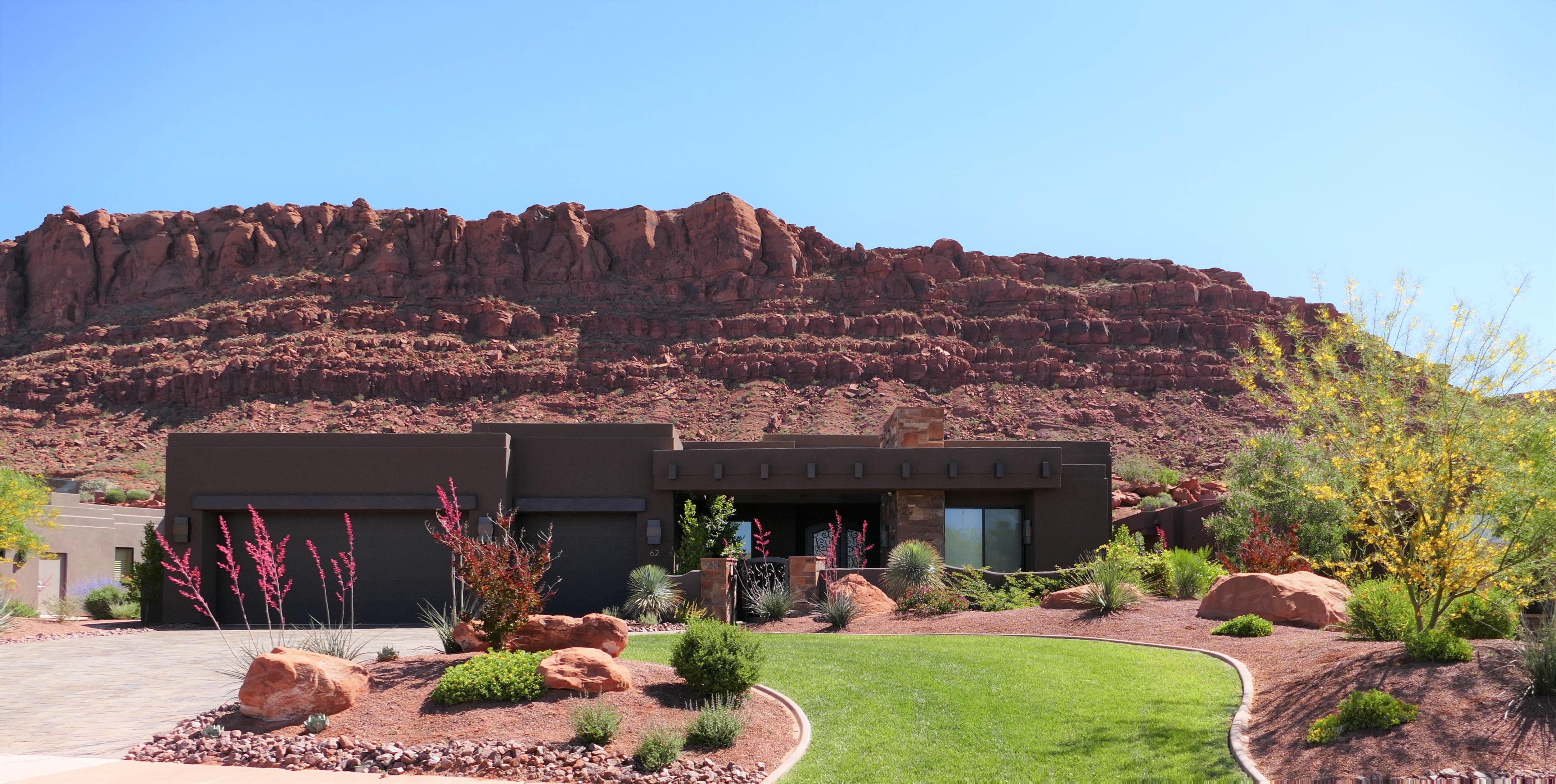CITIES IN WASHINGTON COUNTY ADOPT UTAH’S MOST RESTRICTIVE ORDINANCES TO HELP PREVENT WATER SHORTAGE IN NATION’S FASTEST-GROWING REGION New ordinances are projected to save nearly 11 billion gallons of water over the next 10 years




 St. George, Utah
|
August 03, 2022 07:51 AM Mountain Daylight Time
St. George, Utah
|
August 03, 2022 07:51 AM Mountain Daylight Time
Washington County’s largest cities have banned non-functional grass for newly constructed commercial, institutional and industrial developments and are limiting grass at new homes.1 In addition, new golf courses in St. George will not be approved unless the development can provide its own non-potable water source for irrigation.

The ordinances, needed to prevent the fastest growing region in the nation from running out of water, are the most restrictive for new construction in Utah.
“We can’t risk running out of water,” said Zach Renstrom, general manager of the Washington County Water Conservancy District (district). “Prolonged drought has threatened our only water source – we have to make changes to how our community uses its water to protect our economy and quality of life.”
“We applaud Washington County’s water conservation accomplishments and current efforts, including setting a higher development standard in the state with these new municipal ordinances,” said Utah Gov. Spencer J. Cox. “Our future depends on every community in Utah making water conservation a top priority.”
The ordinances also require the use of secondary (untreated) water and reuse (treated wastewater) for outdoor irrigation where available. Washington County currently uses secondary and reuse water to irrigate parks, schools, golf courses, city-owned facilities and some residential neighborhoods. The district is developing a regional reuse system in partnership with its municipal customers that will significantly enhance the availability of reuse water for future development.
Other ordinance requirements include:
- Hot water recirculation systems
- Water-sense labeled fixtures
- EnergyStar appliances
- Submetering of multi-unit facilities
- Restrictions on water features including misting systems
- Water budgets for golf courses, and
- Limits on water used by car wash facilities
The new ordinances are projected to save nearly 11 billion gallons of water in the next 10 years.
Each respective municipality will enforce its new ordinance. The cities will review received water waste complaints and monitor metering data to notify and issue penalties to non-compliant customers.

To help encourage compliance, the district will begin assessing an additional fee for high water use in 2023. Money generated from this fee will fund water conservation programs, including rebates to replace grass with water-efficient landscaping.
Most municipalities require a minimum landscape vegetative cover using drought-tolerant plants and trees irrigated with a drip system to maintain community aesthetics and reduce impacts from urban heat island effects.
Washington County is Utah’s hottest, driest and fastest-growing region. The county’s population is projected to more than double by 2050. All major population centers are currently dependent on a single water source, the Virgin River Basin, which is reaching its full development capacity. The basin has been in drought conditions 16 of the last 20 years and water supply levels at local reservoirs are decreasing.
The county’s long-term water supply plan includes additional water conservation and reuse, local source optimization and new resource development. Washington County has already reduced its per capita water use more than 30% since 2000 – the greatest reduction in water use in Utah – and is planning for an additional 14% reduction by 2030, using 2015 as the baseline year.
1 Residential restrictions vary slightly by municipality, but most are limited to 8% of the lot size with a cap for large lots. Grass in park strips, in areas less than 8 feet wide and on slopes is prohibited.
About Washington County Water Conservancy District
The Washington County Water Conservancy District is a not-for-profit public agency that oversees water resources in Washington County, Utah. Visit wcwcd.org for more information.
Contact Details
Washington County Water Conservancy District
Karry Rathje
+1 435-673-3617
Company Website
